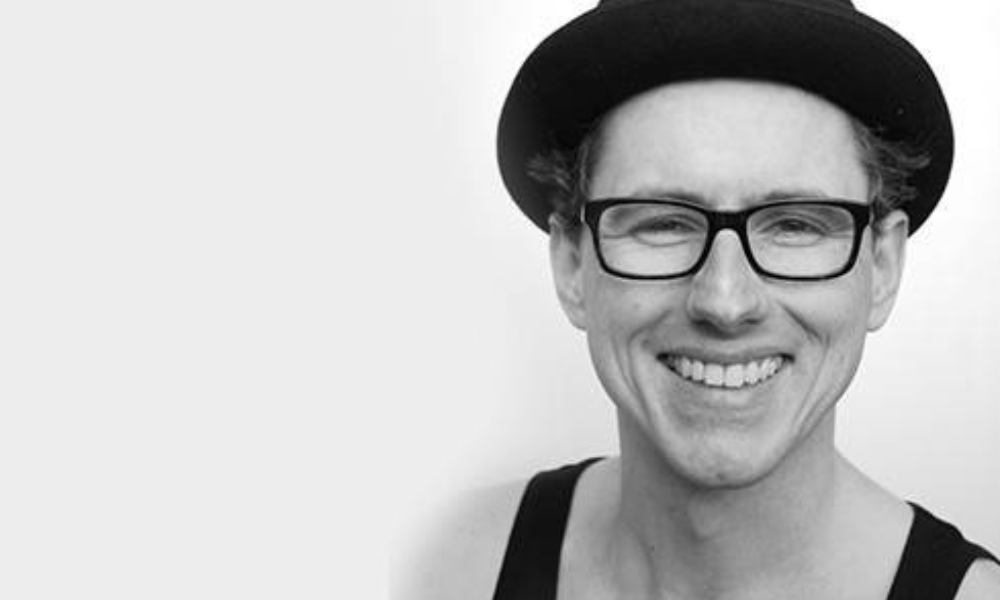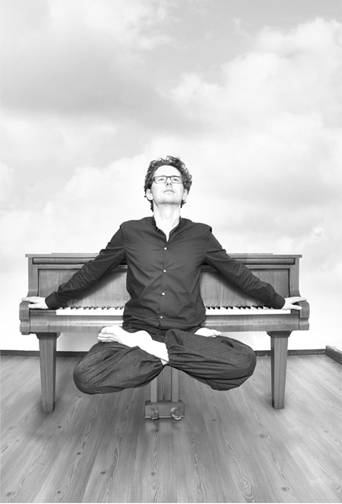Portrait: Andreas Loh
In the portrait: Andreas Loh
Composer, Pianist & Yoga Teacher / Berlin - Germany

I became aware of the instrument during a workshop. I saw it being played by another participant and was immediately fascinated. I was particularly touched by the beautiful and enchanting sound.
I always play the Sansula before and after yoga practice, to get in the mood and also for final relaxation. I try not to show the participants the instrument, but to surprise them with its touching sound. Since I give workshops and retreats all over Europe, I succeed in doing this time and time again. Many people react with real surprise and ask where this beautiful sound comes from. Many are also not sure whether the sounds are played "live" or come from a CD. In particular, the possibility of making the sound of the Sansula sound as a vibrato always appeals to listeners. I also use the Sansula to make music with the yoga group during retreats. It is always a great experience when 15 Sansulas sound at the same time.
To be honest, I decided to use the Sansula to create beautiful soundscapes using as few tones as possible, in order to guide the listener "inward" and to find peace. This is how the recordings for my CD "sounds of my hands" came about. I had already heard several Sansula CDs, but their sound was often too overloaded and not musical enough for me. In order to be able to work intensively on the implementation, I traveled to the St. Michaelstein monastery in the Harz Mountains for a week, where I recorded the pieces in the monks' large dining room, the old reflectorium.
For me, the Sansula is a beautiful, handy instrument that allows people to play together and have musical experiences, even without any previous musical knowledge.
Even though the Sansula has a limited range of tones, I still see it as a serious instrument. The sound of these tones is unique. In my opinion, the quality of the materials used and their processing at the highest level are responsible for this uniqueness. In addition, the Sansula is a product "Made in Germany" with an excellent price-performance ratio.
"Enchanting melodies in the style of Ludovico Einaudi meet the intensity of Keith Jarrett" Even with a sentence like that you can imagine the versatility behind the name Andreas Loh. He draws on a rich pool of musical influences that range from new classical, jazz and avant-garde to pop, noise rock and hardcore... Andreas learned to play the classical piano and drums as a child. Inspired by archaic musical experiences during his time as a drummer in rock bands, his desire was to find creative expression in his own compositions. He studied drums and piano at the renowned Felix Mendelssohn-Bartholdy University of Music and Theater in Leipzig. There he wrote his first compositions for his jazz trio Tripol, which were published live on the MDR music program Kontrapunkt. He played all musical styles as a drummer in a wide variety of bands for 15 years and developed his musical ability and expressiveness with great passion. For several years now, in addition to composing in the area of new classical music, improvising on the piano has also been an important part of Andreas Loh's work. When Andreas Loh starts playing, it is calm and intense at the same time. In his playing, he explores inner landscapes and transforms them into tones, into beautiful melodies and powerful, densely woven carpets of sound. His music is permeated with emotional depth, passion and devotion. It creates inner images and allows the inexhaustible expression of music to be experienced directly. In 2009 he released his first CD entitled "Piano". In 2010 he released the CD YOGA PIANO. His third album "Numinosa" followed in 2013. It is also a pure piano instrumental album in which he translates the unconscious influences of the so-called numinosum into a musical album. Especially when he improvises, you notice how deeply he lets the music penetrate him, bundles it into emotions and expresses it through his playing in a powerful and emotional way. Anyone who listens to his compositions and improvisations can close their eyes, open their ears and tune their heart to receive. Because that's what it's all about - encountering yourself and your feelings in music...

Interview: Annalena Horl
